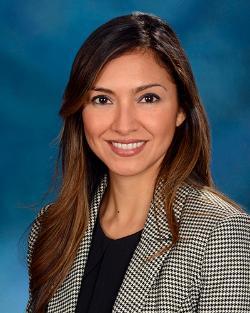September 07, 2023

The University of Maryland School of Medicine (UMSOM) and the University of Maryland, Baltimore County (UMBC) were awarded a 5-year, $13.7 million grant from the National Institutes of Health (NIH) to enhance a culture of inclusive excellence among biomedical faculty. The grant comes from the NIH Common Fund, the Faculty Institutional Recruitment for Sustainable Transformation (FIRST) program, founded last year.

“It is designed to foster sustainable culture change and promote inclusive excellence by enabling us to hire new faculty and to support faculty development, mentoring, and promotion opportunities,” said lead principal investigator on the grant, James Kaper, PhD, the James and Carolyn Frenkil Distinguished Dean’s Professor, Vice Dean for Academic Affairs, and Chair of the Department of Microbiology & Immunology at UMSOM.
The grant aims to build self-reinforcing communities of scientists committed to inclusive excellence, through the recruitment of early-career faculty who are competitive for Assistant Professor (or equivalent) positions.

“The dearth of opportunities in STEM for people from disadvantaged backgrounds and those with disabilities is one of our most critical challenges,” said Mark T. Gladwin, MD, Vice President for Medical Affairs at University of Maryland, Baltimore, and the John Z. and Akiko K. Bowers Distinguished Professor and Dean at UMSOM. “This tremendous grant from NIH is a major step in building self-reinforcing communities of scientists committed to inclusive excellence.”

The NIH FIRST grant builds off UMBC’s highly esteemed Meyerhoff Scholars Program, started more than 30 years ago, which has led to UMBC being the leading college for developing underrepresented STEM recruits at the undergraduate level. UMBC is the nation’s #1 producer of Black undergraduates who go on to complete a PhD in the natural sciences or engineering and #1 for Black undergraduates who complete an MD/PhD. At the same time that UMBC excels in educating undergraduates, it is also classified as one of only 146 R1 (“very high research activity”) institutions in the nation.
UMBC’s efforts to promote inclusive excellence in STEM include the PROMISE Academy and ADVANCE, which has increased women faculty in STEM by 70 percent at UMBC since 2003. The College of Natural and Mathematical Sciences’ Pre-professoriate Fellowship offers incoming faculty two-year appointments as research assistant professors, with structured mentoring and other scaffolds for success. Faculty who came to UMBC through this program in biological sciences, physics, and chemistry have already been converted to tenure-track assistant professors.
UMSOM also is an epicenter of a STEM, health-science pipeline with the UMB CURES program for middle and high school students, several internship and summer research programs for college students, and multiple post-graduate training programs that give future scholars direct experience in a laboratory setting.
“Between the two schools, we have a long track record of offering training and leadership opportunities that positively impact faculty development, retention, progression, and eventual promotion," said Dr. Kaper.
Related story:
FIRST faculty cohort brings new research areas to College of Natural and Mathematical Sciences
The project is funded by the NIH Common Fund (U54CA272205).
About the University of Maryland School of Medicine
Now in its third century, the University of Maryland School of Medicine was chartered in 1807 as the first public medical school in the United States. It continues today as one of the fastest growing, top-tier biomedical research enterprises in the world — with 46 academic departments, centers, institutes, and programs, and a faculty of more than 3,000 physicians, scientists, and allied health professionals, including members of the National Academy of Medicine and the National Academy of Sciences, and a distinguished two-time winner of the Albert E. Lasker Award in Medical Research. With an operating budget of more than $1.3 billion, the School of Medicine works closely in partnership with the University of Maryland Medical Center and Medical System to provide research-intensive, academic, and clinically based care for nearly 2 million patients each year. The School of Medicine has nearly $600 million in extramural funding, with most of its academic departments highly ranked among all medical schools in the nation in research funding. As one of the seven professional schools that make up the University of Maryland, Baltimore campus, the School of Medicine has a total population of nearly 9,000 faculty and staff, including 2,500 students, trainees, residents, and fellows. The combined School of Medicine and Medical System (“University of Maryland Medicine”) has an annual budget of over $6 billion and an economic impact of nearly $20 billion on the state and local community. The School of Medicine, which ranks as the 8th highest among public medical schools in research productivity (according to the Association of American Medical Colleges profile) is an innovator in translational medicine, with 606 active patents and 52 start-up companies. In the latest U.S. News & World Report ranking of the Best Medical Schools, published in 2021, the UM School of Medicine is ranked #9 among the 92 public medical schools in the U.S., and in the top 15 percent (#27) of all 192 public and private U.S. medical schools. The School of Medicine works locally, nationally, and globally, with research and treatment facilities in 36 countries around the world. Visit medschool.umaryland.edu
About the University of Maryland, Baltimore County
UMBC is a leading public research university known for innovative teaching, relevant research across disciplines, and a supportive community that empowers and inspires inquisitive minds. UMBC serves 14,000 undergraduate and graduate students, and combines the learning opportunities of a liberal arts college with the creative intensity of a leading research university. UMBC was classified as an R1 (“very high research activity”) institution in 2022 under the Carnegie Classification of Institutions of Higher Education. At the same time, UMBC is one of the country’s most inclusive education communities, including students from more than 90 countries. UMBC also contributes to Maryland through strong government and industry partnerships that advance K–16 education, entrepreneurship, workforce training, and technology commercialization. U.S. News & World Report has named UMBC a national leader in both innovation and undergraduate teaching, and has recognized UMBC's graduate programs as among the nation's best. Times Higher Education has recognized UMBC as one of the world's top 100 young universities for strong research, innovation, and an international outlook. Visit umbc.edu for more information.
Contact
Office of Public Affairs
655 West Baltimore Street
Bressler Research Building 14-002
Baltimore, Maryland 21201-1559
Contact Media Relations
(410) 706-5260
